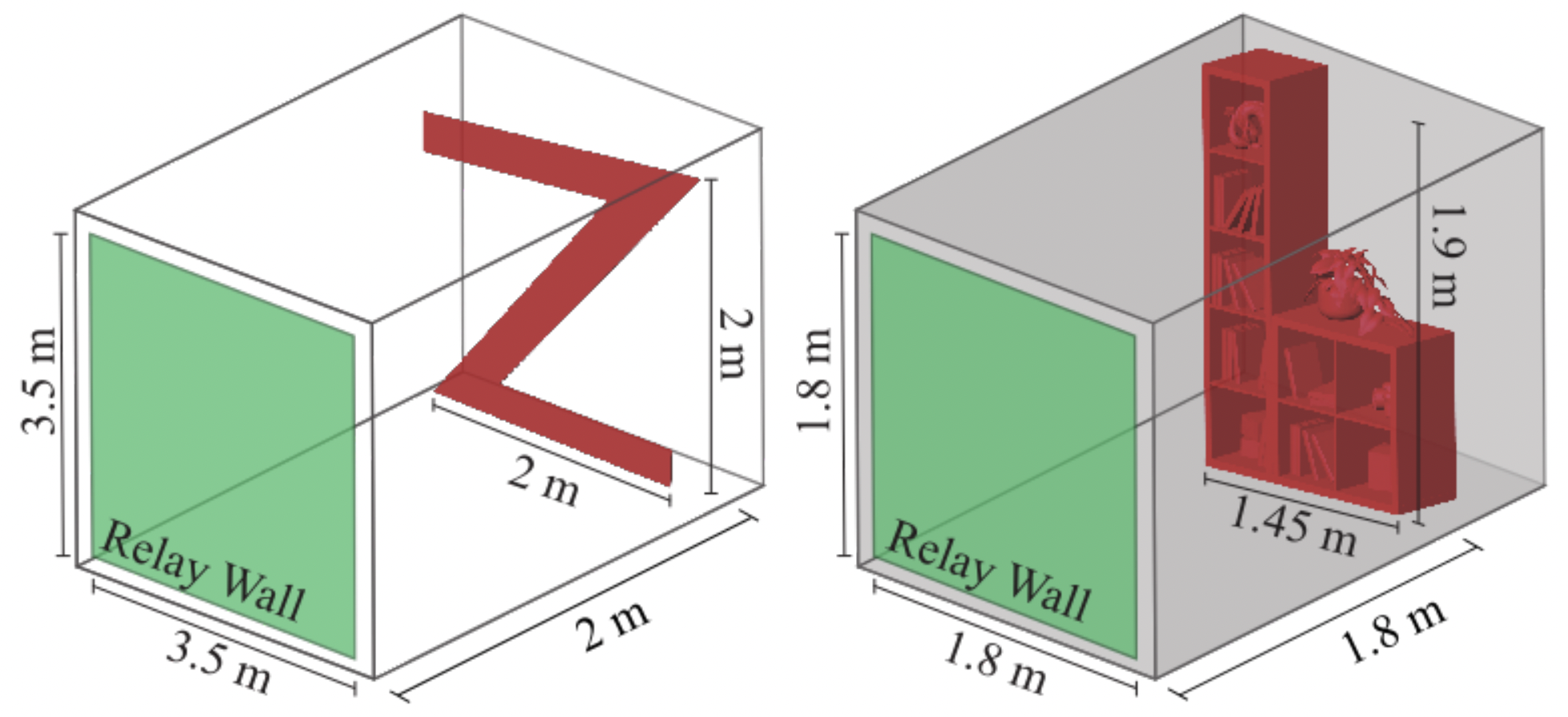
Scene setup: The scene is hidden behind a diffuser, with the scene being submerged in a scattering medium. Reconstructions of experimental data: Each column is a different scene. Top: images of the scenes behind the diffuser. Middle: Lindell and Wetzstein reconstructions (CDT). Bottom: our reconstructions using Phasor Fields. The higher frequency of CDT is related to the deconvolution to compensate scattering at the diffuser.
Abstract
Non-line-of-sight (NLOS) imaging aims to reconstruct partially or completely occluded scenes. Recent approaches have demonstrated high-quality reconstructions of complex scenes with arbitrary reflectance, occlusions, and significant multi-path effects. However, previous works focused on surface scattering only, which reduces its generality in more challenging scenarios such as scenes submerged in scattering media. In this work, we investigate current state-of-the-art NLOS imaging methods based on Phasor Fields to reconstruct scenes submerged in scattering media. We empirically analyze the capability of Phasor Fields in reconstructing complex synthetic scenes submerged in thick scattering media. We also apply the method on real scenes, showing that it performs similarly as recent diffuse optical tomography methods.
Figures
Bibtex
@article{Luesia:22,
author = {Pablo Luesia and Miguel Crespo and Adrian Jarabo and Albert Redo-Sanchez},
journal = {Opt. Lett.},
keywords = {Diffuse optical tomography; Fourier optics; Imaging techniques; Multiple scattering; Scattering media; Spatial light modulators},
number = {15},
pages = {3796--3799},
publisher = {Optica Publishing Group},
title = {Non-line-of-sight imaging in the presence of scattering media using phasor fields},
volume = {47},
month = {Aug},
year = {2022},
url = {http://opg.optica.org/ol/abstract.cfm?URI=ol-47-15-3796},
doi = {10.1364/OL.463296},
abstract = {Non-line-of-sight (NLOS) imaging aims to reconstruct partially or completely occluded scenes. Recent approaches have demonstrated high-quality reconstructions of complex scenes with arbitrary reflectance, occlusions, and significant multi-path effects. However, previous works focused on surface scattering only, which reduces the generality in more challenging scenarios such as scenes submerged in scattering media. In this work, we investigate current state-of-the-art NLOS imaging methods based on phasor fields to reconstruct scenes submerged in scattering media. We empirically analyze the capability of phasor fields in reconstructing complex synthetic scenes submerged in thick scattering media. We also apply the method to real scenes, showing that it performs similarly to recent diffuse optical tomography methods.},
}





